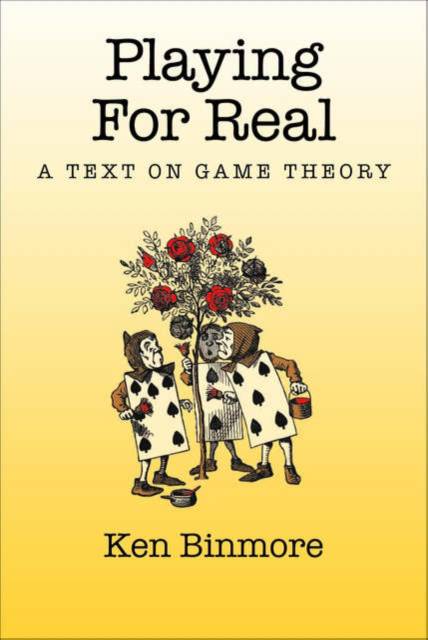
- Afhalen na 1 uur in een winkel met voorraad
- Gratis thuislevering in België vanaf € 30
- Ruim aanbod met 7 miljoen producten
- Afhalen na 1 uur in een winkel met voorraad
- Gratis thuislevering in België vanaf € 30
- Ruim aanbod met 7 miljoen producten
Zoeken
Omschrijving
Ken Binmore's previous game theory textbook, Fun and Games (D.C. Heath, 1991), carved out a significant niche in the advanced undergraduate market; it was intellectually serious and more up-to-date than its competitors, but also accessibly written. Its central thesis was that game theory allows us to understand many kinds of interactions between people, a point that Binmore amply demonstrated through a rich range of examples and applications. This replacement for the now out-of-date 1991 textbook retains the entertaining examples, but changes the organization to match how game theory courses are actually taught, making Playing for Real a more versatile text that almost all possible course designs will find easier to use, with less jumping about than before. In addition, the problem sections, already used as a reference by many teachers, have become even more clever and varied, without becoming too technical. Playing for Real will sell into advanced undergraduate courses in game
theory, primarily those in economics, but also courses in the social sciences, and serve as a reference for economists.
theory, primarily those in economics, but also courses in the social sciences, and serve as a reference for economists.
Specificaties
Betrokkenen
- Auteur(s):
- Uitgeverij:
Inhoud
- Aantal bladzijden:
- 656
- Taal:
- Engels
Eigenschappen
- Productcode (EAN):
- 9780195300574
- Verschijningsdatum:
- 29/03/2007
- Uitvoering:
- Hardcover
- Formaat:
- Genaaid
- Afmetingen:
- 254 mm x 185 mm
- Gewicht:
- 1261 g

Alleen bij Standaard Boekhandel
+ 256 punten op je klantenkaart van Standaard Boekhandel
Beoordelingen
We publiceren alleen reviews die voldoen aan de voorwaarden voor reviews. Bekijk onze voorwaarden voor reviews.











